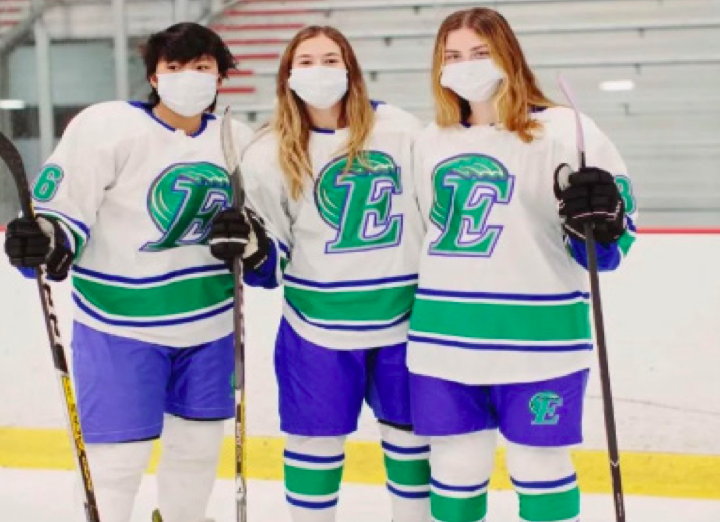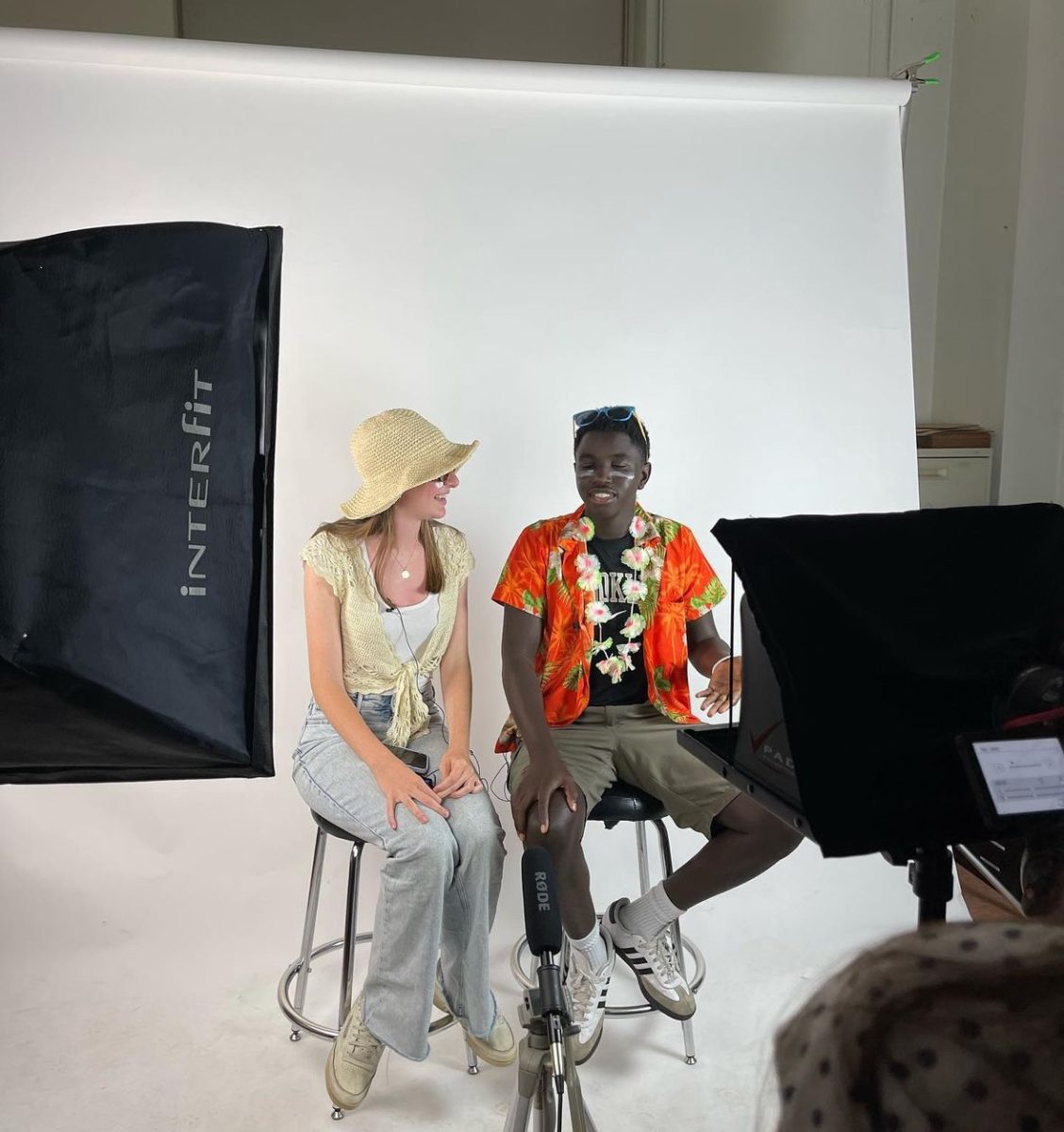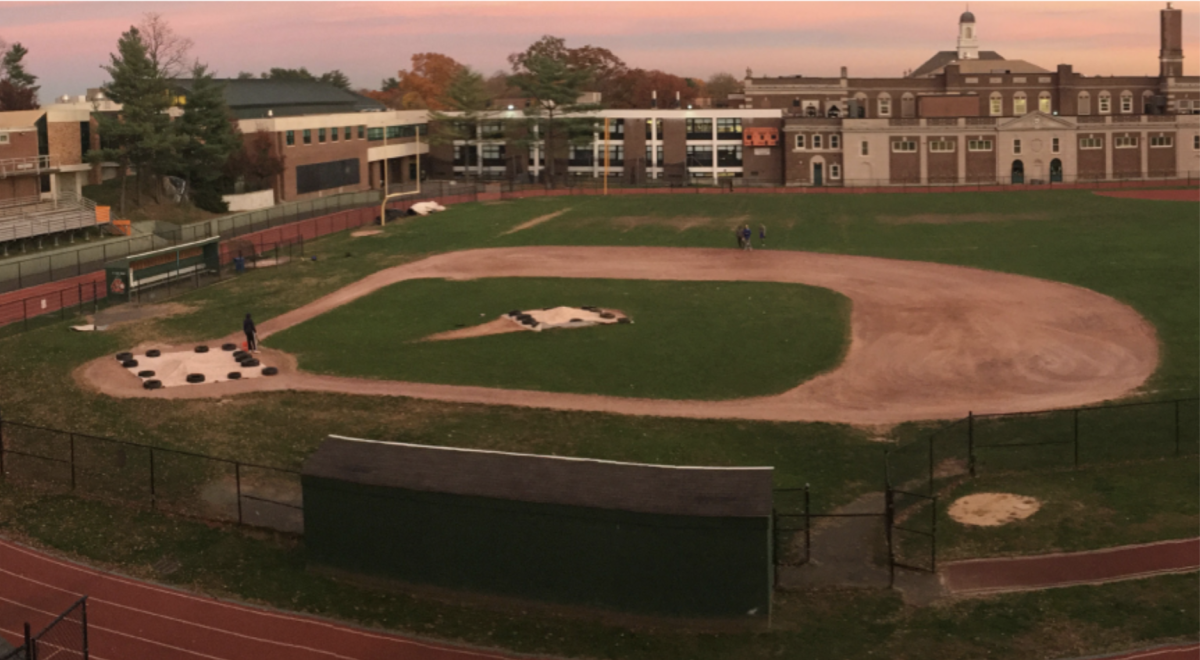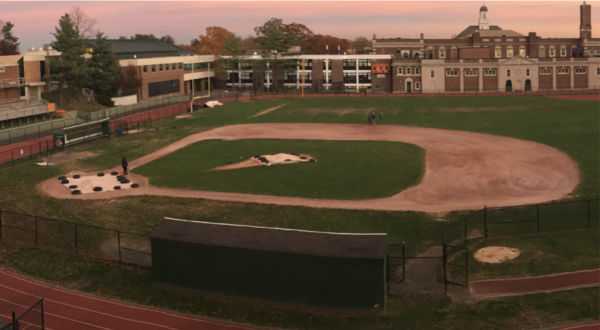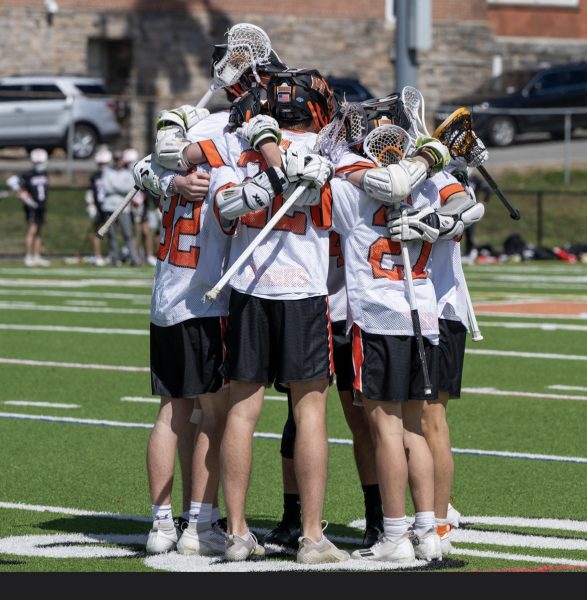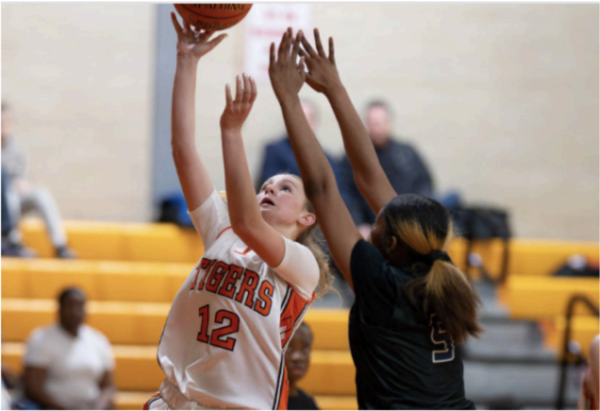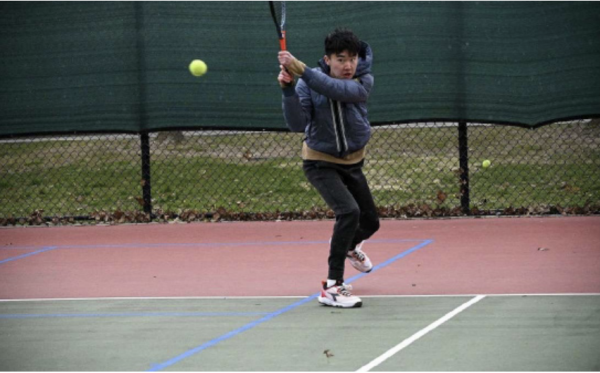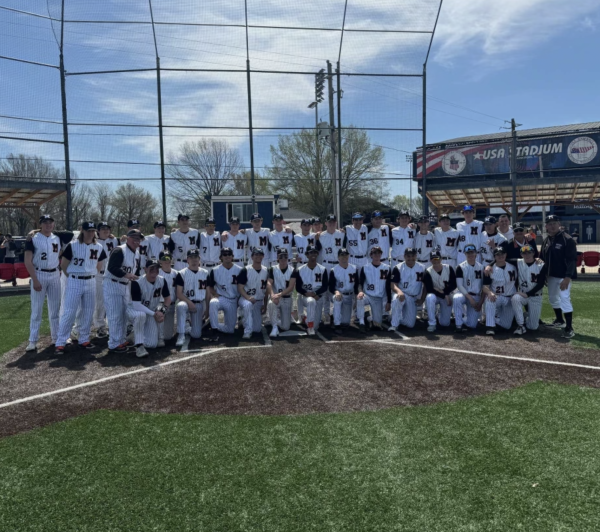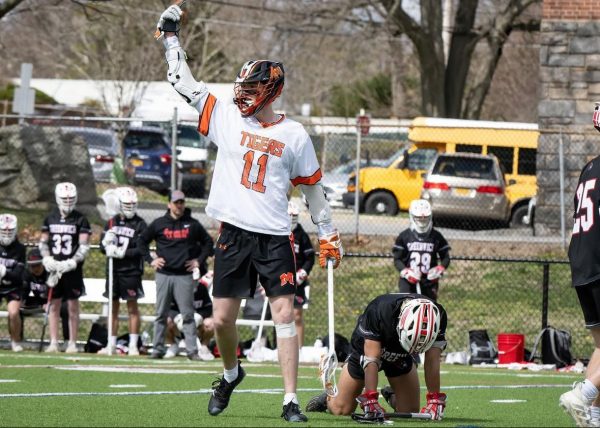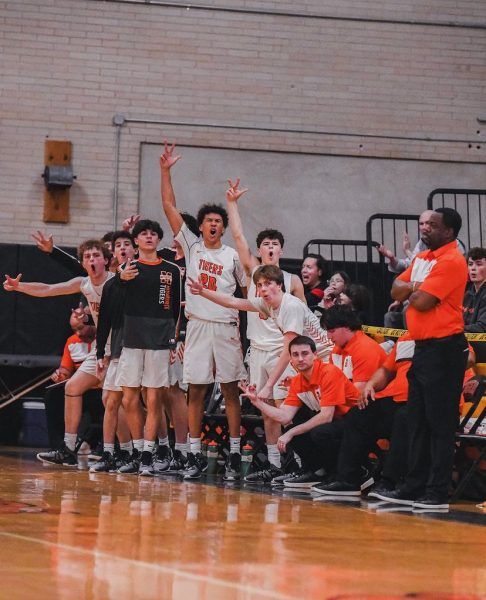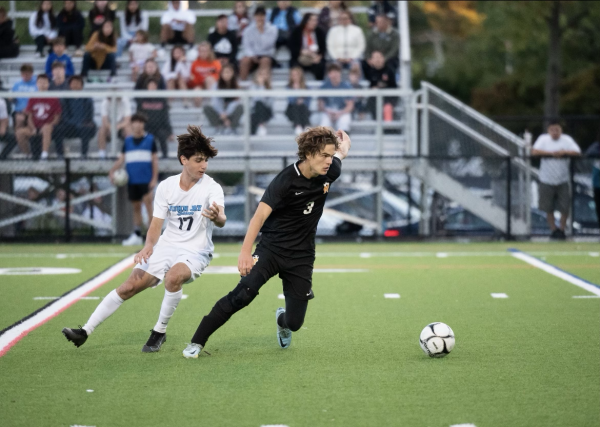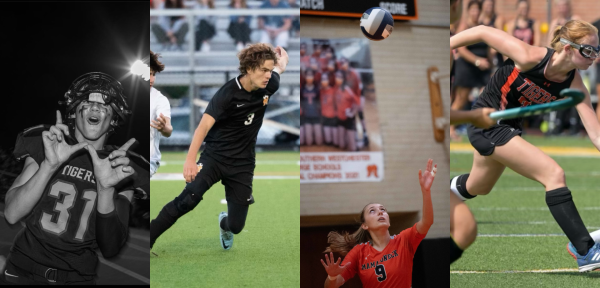The Rise of Section 1 Girls Hockey
Female hockey players of Section 1 are now given the chance to have their own team.
Photo courtesy of Lily Margoshes ('23)
From left to right: Maya Duthie (‘23), Harper Kaplan (‘24), Lily Margoshes (‘23)
February 28, 2022
For years, as youth hockey developmental programs have expanded to accommodate the rising numbers of girls on the ice, varsity sports have trailed behind. While girls’ travel hockey thrives, opportunities for girls to represent their high schools during the winter season have been slim to none. They continue to dot the traditional boys’ Varsity programs around Section 1, but not in substantial quantities.
Until now. In 2021, Section 1 launched its brand-new girls’ hockey program. It features just two merger teams: the Westchester/Putnam East Green Wave and the Rockland Rockies. As made clear by the names, no Section 1 high school has its own girls Varsity team (yet) – not enough high schools are currently able to produce a full roster of their own players. As a result, both the East Green Wave and Rockies are rostered with Section 1’s top players from more than ten different schools, making for an extremely competitive atmosphere despite the only sectional play being against each other. While in an abbreviated 2021 season both teams could only compete against each other, this season has introduced interleague and interstate play for both clubs – including trips to Lake Placid, northern Connecticut, and Long Island – allowing each team to be tested against the tri-state’s top competition.
While COVID-19 concerns prevented any Mamaroneck involvement with the program’s inaugural 2021 season, this year three Mamaroneck players can be found on the East Green Wave’s roster: Lily Margoshes (‘23), Maya Duthie (‘23), and Harper Kaplan (‘24).
All three have had experience playing on both all-girls and co-ed teams in the past, but prefer the atmosphere that the East Green Wave presents. “I chose to play Section 1 girls hockey because I wanted a community that I could feel more comfortable in,” says Kaplan, who has been playing for nine years. The sense of community is prevalent – Duthie, who has been in hockey for 10 years, “enjoy[s] the team and the chemistry [they] have together.” While all three players have had success playing co-ed hockey, there was an extra appeal to playing with the girls this year. “Although I enjoyed my time on both the Modified and JV boys teams, I thought that the girls’ team might be more fun for me personally,” says Margoshes, an 11-year hockey player.
There are a lot of differences between the East Green Wave and your average varsity sports team. For one thing, multiple high schools are represented on the roster. While some may presume that unfamiliarity with each other might create problems, Margoshes notes that the team “emphasizes the importance of community, family, and inclusivity and it creates a really positive and fun environment.” Kaplan called playing with girls from other schools, like John Jay Cross-River and Rye, “super fun.” Margoshes also notes how she got to reunite with friends she had previously made while playing travel hockey. Additionally, no player is limited to just one position. Both Kaplan and Duthie noted how they play any position, offense or defense. Meanwhile, the team’s shortage of goalies forces players to suit up in goalie equipment – often for the first time ever – at a moment’s notice.
While girls’ hockey is still physical, it doesn’t have checking, which is found in the co-ed/boys’ game. Checking, especially at a smaller stature, can be dangerous. “I also felt like I could no longer compete with the boys because of checking and how I was not big enough to check back,” Kaplan explains. The physical differences between boys and girls inevitably influenced Kaplan’s decision to join the East Green Wave. While the girls’ game is quicker and less heavy-hitting, this style of play was not embraced on co-ed teams. “Girls [on the boy’s team] didn’t get the same playing time,” Duthie notes. The opportunity to get quality ice time playing girls-only is not as available playing co-ed.
While there’s still a long way to go until girls’ hockey holds the same prevalence in Section 1 as their male counterparts, the East Green Wave is certainly a great starting point. “I really hope more girls try out,” says Duthie. “Even if they’re new to the sport, we have a development team where they can learn to play, which is really rare for schools to have. I wish that this team continues for the girls in the future.” It’s clear that the supportive atmosphere makes an imprint on its players. Many girls shy away from hockey due to the male-to-female imbalance, and the pressure to start the sport at an incredibly young age. However, Kaplan believes that the future of Section 1 girls hockey is bright: she believes it will “show more girls in the community that hockey isn’t just a sport for boys, and they can play whatever they want to.”



